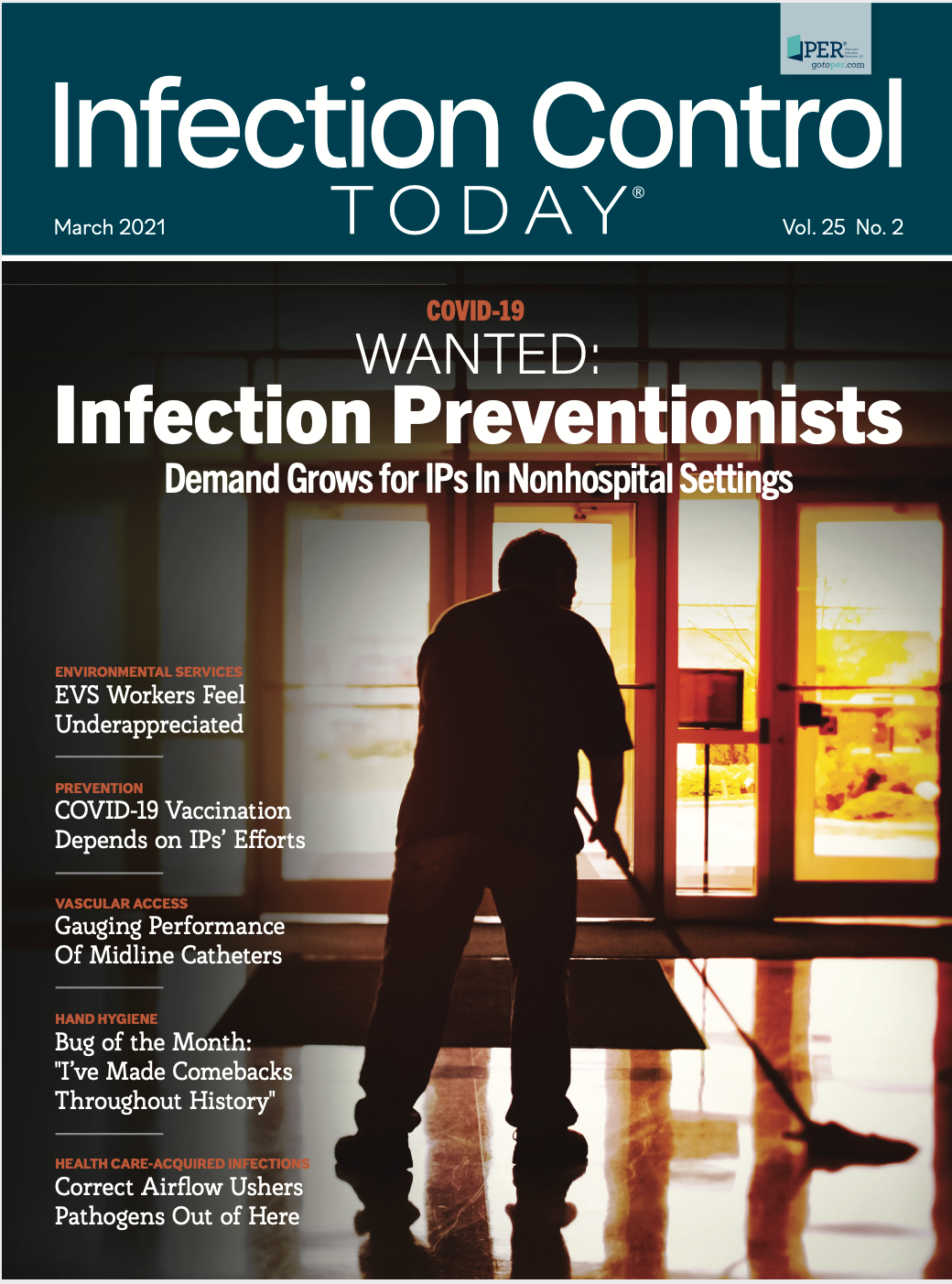Environmental Service Workers Not Feeling the Love
Many members of environmental service teams feel underappreciated and these health care professionals are not trained in any systematic and continuous way, a study states.
Environmental services (EVS) teams play a crucial (but often unsung)1 role in preventing infection at hospitals and long-term care facilities (LTCFs). However, they are not trained as well as they should be and see themselves as having a low social status, according to findings from a study in the American Journal of Infection Control (AJIC).2 Investigators with Clemson University carried out a systematic literature review of English language studies about EVS conducted between 2000 and 2009.
Although environmental services workers (ESWs) felt they provided little value to the organizations they worked for, most nonetheless believed that the work itself was important in keeping patients safe from infections. The problem is that ESWs are not trained in any systematic and ongoing manner, the investigators note.
“To sustain improvements in disinfection practices, education/training sessions need to be continuous,” they write. “The long-term commitment of an organization is also essential for continuous improvement in disinfection outcomes. While knowledge transfer is critical for behavior change, education/training also needs to focus on the skills and perceptions of ESWs.”
On reviewing 31 studies, the investigators noted that although ESWs know how to do their jobs, that knowledge “does not address many of the barriers identified by ESWs, such as high work demands, ‘me/us versus them,’ interruptions, low status or value for ESWs, and lack of communication.”
ESW training should focus not only on organizational and work environment elements, but on intrapersonal and interpersonal skills. “Even in a skills-focused field like environmental services, leadership, self-management, conflict resolution, communication, emotional intelligence, and other ‘soft skills’ are necessary to perform the job effectively,” the investigators state.
But how to measure how well ESWs perform? In the best of all worlds, that would be done by microbial assessments before and after cleaning. However, substantial barriers to doing so exist, including time constraints, cost, and the need to have the microbial samples examined in a laboratory.
At any rate, training about pathogens and microbials should be handled with care. “Many ESWs may not be able to understand advanced microbiology,so information in some areas (eg, pathogens) should be simple.” Rather than giving detailed descriptions of what pathogens are, for example, educators should focus on how they can spread in hospital environments and the procedures ESWs can implement to prevent their spread.
Investigators also noted a dearth of data about EVS at LTCFs, which have been a nexus for the coronavirus disease 2019 (COVID-19) pandemic. Only 1 study looked at the role of EVS in LTCFs.
“Long-term care facilities have been reported to pay considerably less attention [to] disinfection than hospitals, perhaps because of limited staff, insufficient infection prevention education, and staff perception of isolation and contact precautions,” say the investigators.
According to findings from the 31 studies, ESW training involved presentations, instruction booklets, photographs, checklists, and online education modules. Training interventions covered the importance of environmental disinfection, importance of disinfecting frequently touched objects, and transmission of health care–associated pathogens and infections. “Opportunities for providing feedback during the intervention was reported as a motivational strategy in many studies to improve performance,” write the Clemson University authors.
The main point of the current study is that hospitals and LTCFs must make more of an effort to train ESWs and make them feel welcome.
“Even with the ongoing COVID-19 pandemic highlighting disease transmission in health care facilities, environmental services is still an occupation that receives little attention in society, and carries low occupational prestige in the United States,” the authors note. “In the United States, many ESWs are immigrants, people of color, and receive low wages. The reviewed studies identified many ESWs who feel limited respect, appreciation, or positive feedback at work, yet ESWs consistently identified the need to do the job well. They are concerned about patient safety, which forces them to do a good job even if it takes too much time and they are possibly underappreciated.”
References:
- Dyer J. Environmental services during COVID-19: no longer ‘unsung’ heroes. Infection Control Today®. July 16, 2020. https://www.infectioncontroltoday.com/view/environmental-services-during-covid-19-no-longer-unsung-heroes
- Hewage SCN, Cao LTT, Jones RM, Fraser AM. Factors associated with environmental service worker cleaning practices in healthcare settings: a systematic review of the literature. Am J Infect Control. Published online January 9, 2021. doi.10.1016/j.ajic.2021.01.001

Bridging the Gap: Operating Room and Central Processing Unite to Improve Surgical Efficiency
April 8th 2025Communication breakdowns between the operating room and central processing led to delays and frustration—until collaboration, cross-training, and shared goals turned metrics around and strengthened teamwork.